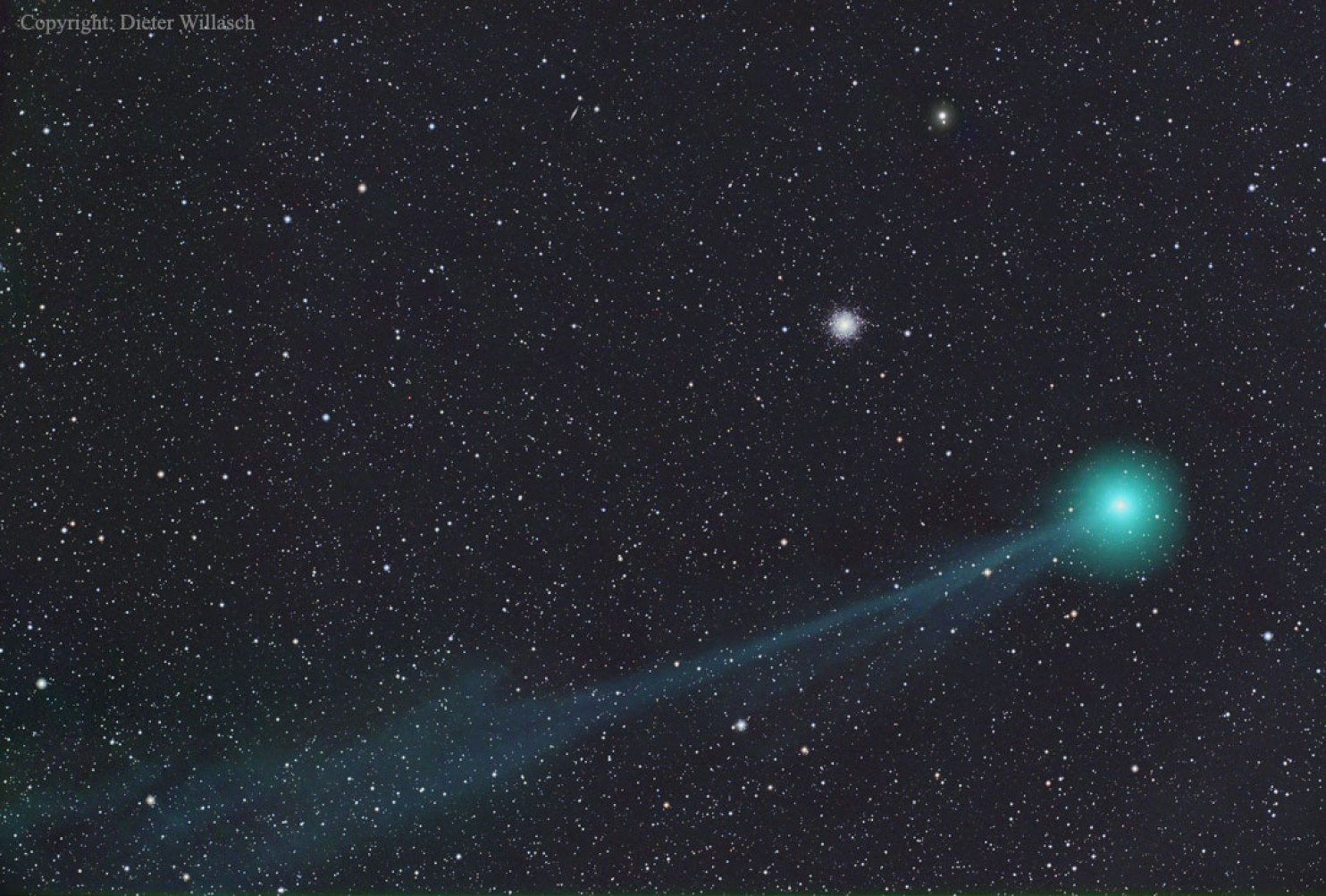10:50 AM | An update on Comet Lovejoy...now in its best two weeks
Paul Dorian
 [Image of Comet Lovejoy; courtesy Washington Post's Capital Weather Gang]
[Image of Comet Lovejoy; courtesy Washington Post's Capital Weather Gang]
Discussion
Overview Comet Lovejoy, C/2014 Q2, is in the midst of its best two weeks. Comet Lovejoy is now about magnitude 3.8, and it should remain that bright all week. On January 7th the comet passed closest by Earth, at a distance of 0.47 a.u. (44 million miles; 70 million km). Although the comet is receding from us now, its intrinsic brightness should still be increasing a bit. That's because it doesn't reach perihelion (its closest to the Sun) until January 30th (at a rather distant 1.29 a.u. from the Sun). By that date, the comet should finally be fading slightly from Earth's point of view.
Where to look Comet Lovejoy is high in the early-evening sky for binoculars or low-power, wide-field telescope viewing. It's also dimly visible to the unaided eye under dark-sky conditions — if you know exactly where to look! According to the Washington Post’s Capital Weather Gang, you’ll find Comet Lovejoy high enough around 8 p.m. (and the later hours too) to the right of the constellation Orion and just under the constellation Taurus. Think of the three stars (Alnitak, Alnilam and Mintaka) of Orion’s belt as a pointer toward the comet, because if you look carefully in a very dark sky, you could see a faint glow. By Thursday, Friday and Saturday, the comet will pass to the right of the Pleiades cluster – also know as the Seven Sisters or Messier 45. Our original story on Comet Lovejoy with links to finder charts can be found at http://vencoreweather.com/2014/12/31/1000-am-comet-lovejoy-rings-in-the-new-year/. Skies may be clear this evening for comet viewing; however, clouds are likely to roll in from the south by late tonight.
 [Finder chart for tonight, January 13th; map courtesy Andrew Ochadlick and heavens-above.com]
[Finder chart for tonight, January 13th; map courtesy Andrew Ochadlick and heavens-above.com]